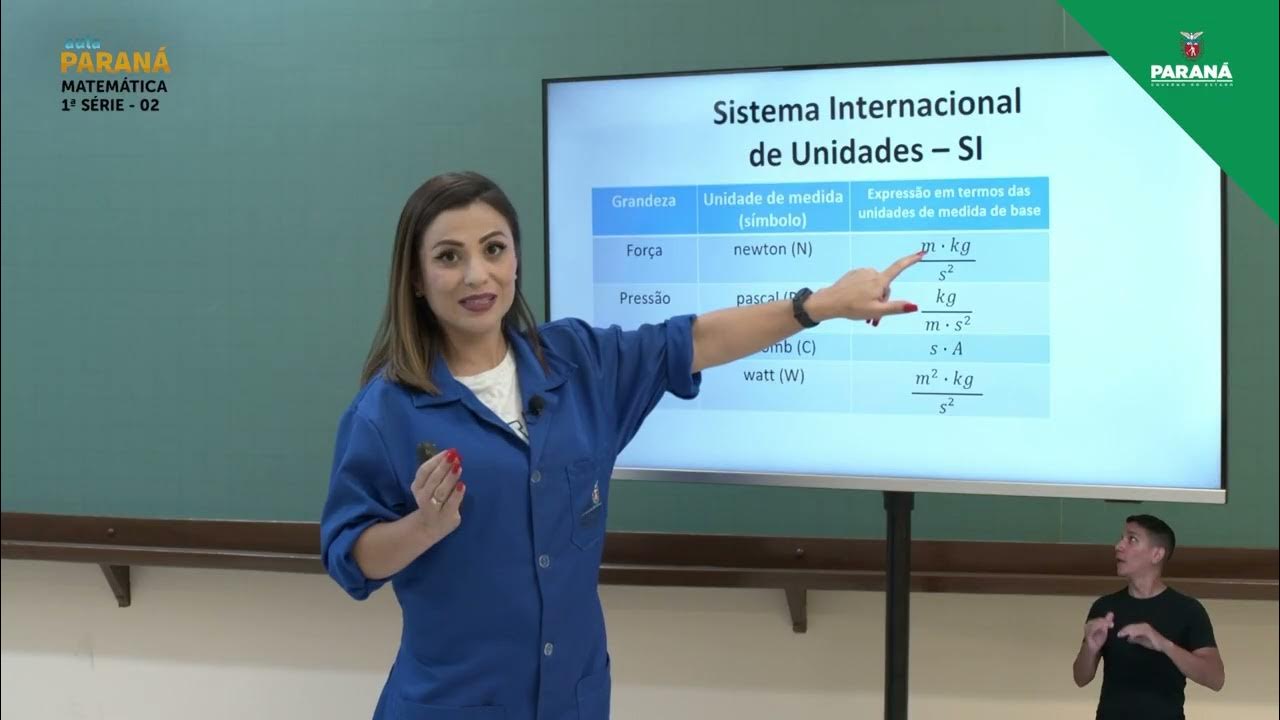IPA Kelas 7 : Besaran Pokok beserta Satuan dan Alat Ukurnya
Summary
TLDRThis educational video covers the fundamentals of physical quantities, focusing on the seven basic ones: length, mass, temperature, electric current, time, light intensity, and amount of substance. The video explains the concept of physical quantities, their units of measurement, and how to convert between them. Tips for memorizing the basic quantities using acronyms like 'Jiwa SMP' are shared, along with examples of units for each quantity. The lesson also touches on various measuring tools such as rulers, balances, and thermometers. It's a beginner-friendly overview aimed at helping middle school students understand these core concepts in physics.
Takeaways
- 😀 Besaran refers to measurable quantities that can be expressed in numbers, such as the length of a table in centimeters.
- 😀 A unit (Satuan) is used to express the result of a measurement and is necessary for understanding the scale of the value.
- 😀 There are two types of quantities: basic (pokok) and derived (turunan) quantities.
- 😀 The seven basic quantities are: length, mass, temperature, electric current, time, luminous intensity, and amount of substance.
- 😀 A mnemonic to remember the seven basic quantities is 'JIWA SMP' which stands for Jumlah Zat, Intensitas Cahaya, Waktu, Arus Listrik, Suhu, Massa, and Panjang.
- 😀 Length is measured in meters (m), with common subunits such as millimeters (mm), centimeters (cm), and kilometers (km).
- 😀 Mass is measured in kilograms (kg), and other units include milligrams (mg), grams (g), and tons.
- 😀 Temperature is measured in Kelvin (K), but Celsius (°C) and Fahrenheit (°F) are also commonly used.
- 😀 Electric current is measured in amperes (A), and time is measured in seconds (s), with other units like minutes and hours.
- 😀 Specialized units like astronomical units (AU) and light-years are used to measure vast distances in space, while units like nanometers, micrometers, and picometers are used for small measurements in fields like biology.
Q & A
What is a physical quantity?
-A physical quantity is anything that can be measured and expressed numerically. It can be a property or characteristic that can be quantified.
What is the definition of a unit in measurements?
-A unit is something used to express the result of a measurement, essentially providing a reference for comparison in a specific measurement.
Why is a unit necessary in expressing measurements?
-A unit is necessary because it provides clarity and context to the numerical value of a measurement. Without a unit, a number would lack meaningful information.
What are fundamental quantities?
-Fundamental quantities are basic physical quantities that have their own defined units and are not derived from other quantities. There are seven fundamental quantities in physics.
How many fundamental quantities are there, and can you list them?
-There are seven fundamental quantities. They are length, mass, temperature, electric current, time, luminous intensity, and the amount of substance.
What is a helpful trick to memorize the seven fundamental quantities?
-One helpful trick is to use the acronym 'JIWA SMP', which stands for: J - amount of substance, I - luminous intensity, W - time, A - electric current, S - temperature, M - mass, P - length.
What is the international unit for length and how is it commonly used?
-The international unit for length is the meter (m). It is used for measuring various dimensions such as height, distance, and depth, with different prefixes for different scales.
What is the international unit for mass, and what are some other units of mass?
-The international unit for mass is the kilogram (kg). Other units include grams (g), milligrams (mg), tons, and pounds.
How do temperature units differ, and what is the international unit for temperature?
-The international unit for temperature is the Kelvin (K). Other units for temperature include Celsius (°C), Fahrenheit (°F), and Reaumur (°Re).
What is the unit for electric current, and how is it measured?
-The unit for electric current is the ampere (A), and it is measured using an ammeter.
What is the significance of different units of time, such as seconds, minutes, and hours?
-Time is measured in seconds (s), with other units like minutes (1 minute = 60 seconds) and hours (1 hour = 60 minutes or 3600 seconds). These units are used to represent different durations of time.
What tools are commonly used to measure the fundamental quantities?
-Common tools include rulers for length, balances or scales for mass, thermometers for temperature, ammeters for electric current, and stopwatches for time.
Outlines

This section is available to paid users only. Please upgrade to access this part.
Upgrade NowMindmap

This section is available to paid users only. Please upgrade to access this part.
Upgrade NowKeywords

This section is available to paid users only. Please upgrade to access this part.
Upgrade NowHighlights

This section is available to paid users only. Please upgrade to access this part.
Upgrade NowTranscripts

This section is available to paid users only. Please upgrade to access this part.
Upgrade NowBrowse More Related Video

BESARAN POKOK | IPA KELAS 7

2022 | Resumo da Aula | 1ª Série | Matemática | Aula 2 - Sistema Internacional de Unidades (SI) II

Pengukuran dan Besaran Pokok

Materi IPA Kelas 7 : Besaran Pokok dan Besaran Turunan

BESARAN DAN SATUAN - MATERI FISIKA KELAS 10 | Edcent.id

Modul Fisika Dimensi Untuk SMA (Murid)
5.0 / 5 (0 votes)